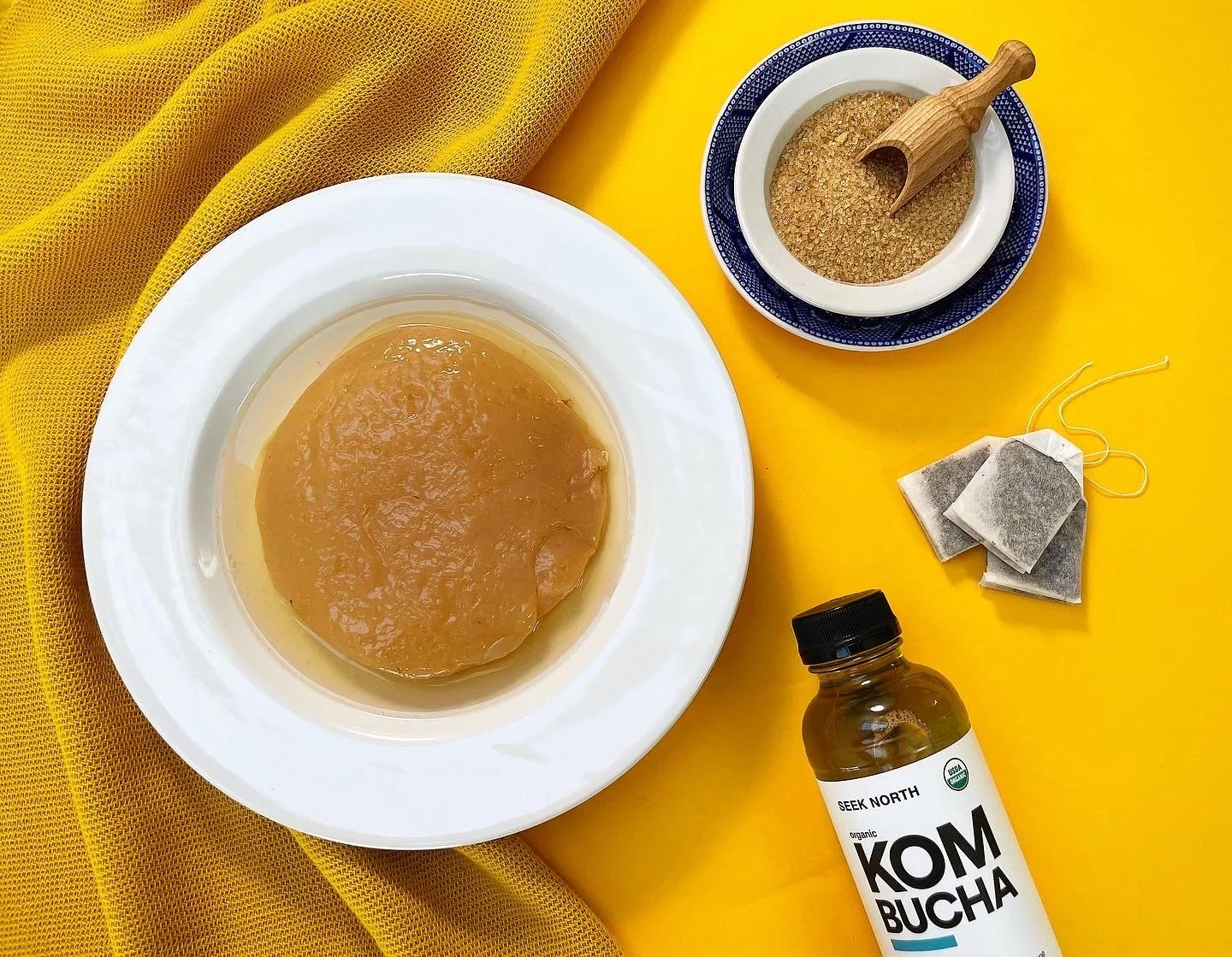PRESS: Star Herald
BASIC KOMBUCHA RECIPE
Star Herald // Full article -here-
by Deanna Fox
Making kombucha at home takes little more than a few simple ingredients and time.
“Brewing kombucha at home can be safe, fun and rewarding if you follow proper instructions and adhere to high hygiene standards,” says Philippe Trinh, head brewer and flavor master for Seek North Kombucha, based in Kingston, New York. Trinh, who shares flavor ideas and brewing tips on his Instagram page, @whiskeyandbooch, says that brewing your own kombucha at home is also cost-effective and sustainable.
The most critical step in kombucha brewing is sanitation — making sure your brewing vessel and all tools are clean and sanitized will prevent any errant bacteria from contaminating the magic of your own kombucha. “I like to run everything through the dishwasher [use a sterile setting if you have it] and then use a simple water and vinegar solution (50/50 mix) in a spray bottle to clean and rinse everything,” Trinh says.
The aforementioned magic comes by way of a kombucha “SCOBY,” a living bacteria and yeast culture that often resembles an opaque, gelatinous orb (SCOBY is actually an acronym for “symbiotic culture of bacteria and yeast”). The SCOBY feeds on the sugars used for brewing kombucha, and generates carbonation and produces vitamins, antioxidants and a sweet-tart flavor that makes kombucha a great alternative to sugary drinks and soda. The best place to find a SCOBY is from a friend who already brews kombucha at home. SCOBYs replicate quickly and can be easily divided for sharing. A kombucha seller at a farmers market is another place to find a SCOBY. Some retailers might also sell SCOBYs, as Seek North does on its website, www.seeknorth.com.
“Whatever you do, don’t purchase an online kit that includes a dehydrated SCOBY and uses vinegar as a kombucha starter,” says Trinh. Dehydrated SCOBYs lose their living bacteria, he warns, and it can be near impossible to successfully brew from a dried kit. He also advises against flavored teas that use infused oils or artificial sweeteners, which can harm your SCOBY.
Trinh offers some pointers for troubleshooting at-home kombucha brewing. If your kombucha is too tart or vinegary, try making a batch with a blend of black and green tea, as the lighter flavor of green tea will make the kombucha less tart. The first brew of kombucha starter might also taste bitter or vinegary, Trinh says, but the flavor will get smoother with subsequent batches of kombucha. Trinh bottles his kombucha while it is still slightly sweet and adds a small amount of juice, sliced fruit or herbs, then allows them to undergo a second fermentation in the bottle for an additional two to five days before refrigeration.
Basic Kombucha Recipe
Yields: 1 gallon
13 cups distilled water
4 organic tea bags (black, green or a combination of both)
1 cup organic cane sugar
2 cups kombucha starter tea (from previous batch of kombucha or store-bought, all-natural kombucha)
Kombucha SCOBY
Boil water, then add sugar and tea. Lightly stir and leave to steep with a lid on the pot for 20 minutes.
Let sweetened tea cool to room temperature then pour into a sanitized one-gallon glass vessel. Add two cups of kombucha starter tea, mix lightly, then add your SCOBY to the jar. Cover jar opening with a cloth secured with a rubber band. Place in a warm location out of direct sunlight. Allow kombucha to brew, remaining untouched, for seven to 14 days. (Note: sometimes your SCOBY will float to the top of your jar, or hang sideways in your jar. A cloudy layer of new SCOBY might form on the surface of your kombucha, and that’s okay. You may also see brown bits or sediment at the bottom of your jar, and that is also okay. This is all part of the fermentation process.)
After seven days, begin tasting your kombucha to see if it has reached the right tart/sweet balance. When you have reached the desired flavor, remove SCOBY and two cups of kombucha from jar to save for your next batch. Pour fermented kombucha into bottles and add any additional flavorings (herbs, juice, fruit, etc.). Leave a half-inch of head room in each bottle. You can either store these in the refrigerator immediately after bottling for a noncarbonated, smooth kombucha, or you can allow them to or undergo a second fermentation. To do so, let filled bottles sit at room temperature for one to three days, which will allow the kombucha to carbonate. Once carbonated, refrigerate and enjoy within two weeks.

